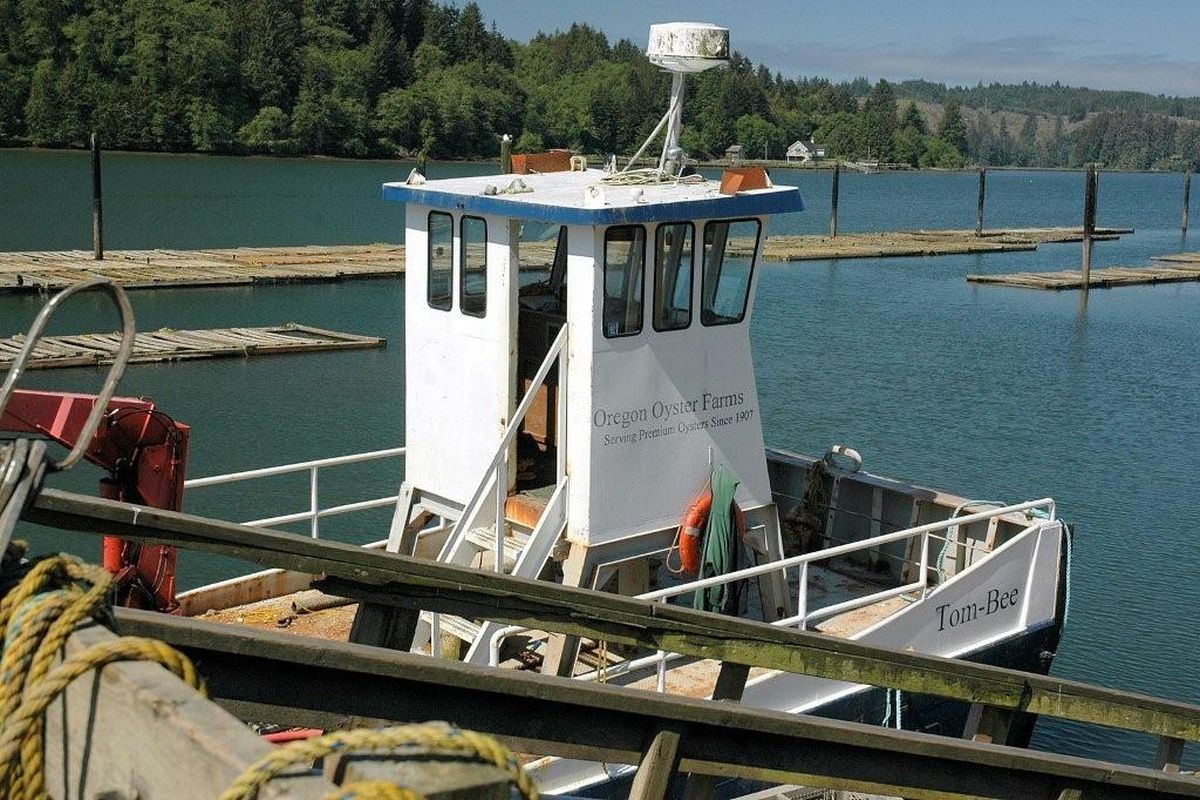Oregon Oyster Farms

Jonathan Swift was quoted as saying, “He was a bold man that first ate an oyster,” and today people eat them raw, smoked, boiled, fried, stewed, canned, pickled, steamed, or grilled.
But everyone that enjoys them agrees that if you are going to eat them raw, the sooner after harvesting, the better they taste. And many agree that oysters from Oregon can give a taste sensation that many have never experienced and will never be fresher.
Two farms located along the central Oregon Coast offer not only fresh oysters but each provides a unique taste to what seems at first to be just a common coastal food source.
Oregon Oyster Farm – Yaquina Bay
It does take a little mental coaxing to pop a raw oyster in your mouth for the first time. Where they are grown makes a difference. It is no accident where the Oregon Oyster Farm was established back in 1907. Located in Yaquina Bay and upriver from Newport, the site was chosen where the submerged, growing oysters will, as the tides shift in and out, get washed alternately with fresh water and sea water. That kind of location is ideal for developing great-tasting oysters.
For those who are uneasy about trying an oyster, a guided tour of the farm could help. You might be surprised to find out that all oysters are not created equal. In other words if you have seen (and eaten) one oyster you have not seen or tasted them all by any means. There are, around the world, many species of oysters and not all are edible.
Some naturally produce pearls but those oysters are not eaten. There are some restaurants that feature 12 different edible kinds at their oyster bar.
According to Wikipedia, “Raw oysters are regarded like wines in that they have complex flavors that vary greatly among varieties and regions: some taste sweet, others salty or with a mineral flavor, or even melon. The texture is soft and fleshy, but crisp. This is often influenced by the water that they are grown in with variations in salinity, mineral and nutrients.”
One dozen raw oysters contain approximately 110 calories and are rich in zinc, iron, calcium and vitamin A.
This farm raises Pacific oysters and a variety of oyster originally from Japan named Kumumoto. A tour can be arranged any time during the working hours, however, it is best to call first to be sure a guide is available. Also if a call is made in advance, sample oysters will be prepared and be available for the guided group.
Oysters from these waters are showing up on restaurant menus from Newport to New York, from Portland to Taiwan. Oregon Oyster Farms is experiencing a boom in new business, including Asian clients, thanks in part to the language skills and knowledge of manager Liu Xin. “The taste is unique. It’s sweeter,” Xin said. “When you eat our oysters, they don’t have that fishy taste.” The way the bivalves are grown at Oregon Oyster Farms, halfway between Toledo and Newport, is unique, as well. Most oyster farms place the mollusks in the bottom of the water, in bags or loose on the sand.
The Yaquina Bay bottom is muddy so Oregon Oyster Farms suspends most of its shellfish on pallets or on ropes instead. The oysters are harvested that are 1- to 5-years old depending on what size a particular market demands.
Umpqua Aquaculture, Inc. Farms – Winchester Bay
Farther south down the Oregon Coast where the Umpqua River meets the ocean there is another oyster farm. A more recent company to grow the famously-known food source that has long been favored as aphrodisiacs is located at the jetties where Winchester Bay and the Umpqua River flow into the ocean. Vern Simmons and Cindy Sardina established their company in 1991 and developed an oyster farm between the triangle formed by the two south jetties. They chose this site because of the unique growing conditions of providing the oysters with a mix of 20 percent/80 percent fresh water and sea water which they felt were optimal growing conditions.
They suspend the growing oysters on 15 foot lengths of rope so that they float above the bottom. It may take 2-4 years for a commercial harvest at this farm. The farm’s business has been successful and they ship to destinations not only along the coast but nationwide. The product has a firm texture and a slightly salty taste.
Both farms offer delicious, uniquely flavored oysters. It’s fun to compare the subtle differences between meats from the two farms.
Casanova is supposed to have eaten 50 oysters a day while taking his bath. Why argue with success?
IF YOU GO
Season: Oysters are available year round
Contacts: Oyster Farm, www.oregonoyster.com (tours are available)
Phone: 1-541-265-5078
Umpqua Aquaculture, Inc.
www.umpquaoysters.com
Phone: 1-541-271-5684
Central Oregon coast Association
www.Coastvisitor.com
Phone: 1-800-767-2064